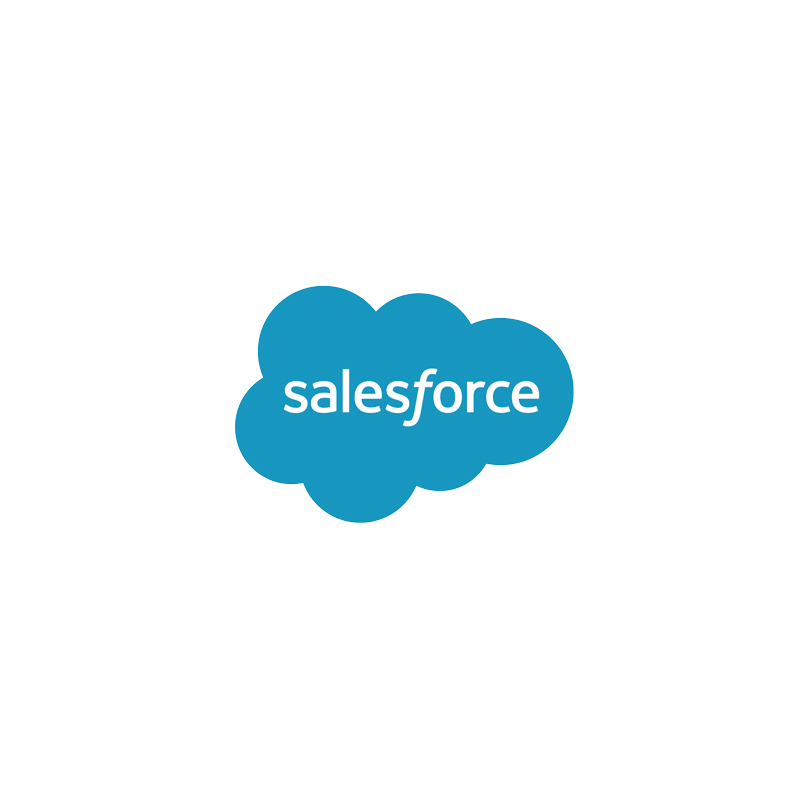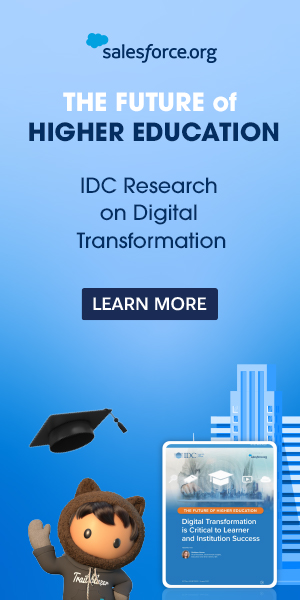University recruitment and admission has transformed in the last year, but institutions have found ways to reach out to students in a meaningful way despite the upheaval
Staying connected to students has never been as important as it has during the past 12 months. University admissions teams have dealt with uncertainty over campus openings and embraced digital communication amid a changing landscape of qualifications and entry requirements.
In a recent webinar hosted by Times Higher Education in partnership with Salesforce.org, titled “University admissions strategy redefined: maximising innovation and personalising the student experience at scale”, the panel agreed that sending out a consistent and personal message to applicants creates a positive first impression that lasts through the student life cycle.
“No student ever says, ‘the business studies department were really slow to respond’; they will always say ‘the university’,” said Robin Halley, director of global marketing and student recruitment at Aberystwyth University. “Having a centralised system to manage the process enables universities to control the reputational side of things and will become more critical as we move into multiple admissions cycles.”
For most students, how they are treated at each step of the application process is a chance to compare their options against each other, added Roisin McEvoy, head of admissions at Queen’s University Belfast. “It’s their first meaningful engagement with university life and becomes an indicator of what they will experience thereafter,” she said.
Corey Snow, director for international solution architecture at Salesforce.org, felt that universities often run the risk of spoiling the first impression by exposing what’s behind the scenes. “We should provide a unified external view regardless of how complex our internal systems are,” he said. “Having a composite application that gives a single view can enable the applicant to navigate more seamlessly through the process.”
Rebecca Hollington, director of UK recruitment and partnerships at the University of Wolverhampton, reflected on how some of these complexities played out at her institution. “We’ve always looked at students in terms of personas with different interests, barriers and motivations so we can talk to them in the right way through the right channel,” she said. “In nursing, for example, you could be a school leaver or a career changer and we have to unpick those journeys.” Post-pandemic this landscape could become even more difficult to untangle, the panel said.
For this reason, transparency and consistency through the process is crucial. “This student generation has expectations of responses and feedback on the same level as Amazon and Netflix, and as a small team this has been a challenge to manage expectations,” said Rhys Thomas, head of admissions at the Royal Central School of Speech and Drama. As a specialist school, it can be the case that colleagues outside the core admissions team need to jump into the process and advise, he added. “The essential thing is that everyone knows what the student is applying for and at what point in the journey they are, so they can advise appropriately,” Thomas said.
Technology can support staff to address these questions seamlessly and focus on building relationships, added Corey. But despite changing admission times and multiple stakeholders, it’s still possible to apply themes and core processes across the board, said Shane Collins, director of student recruitment and admissions at the University of Dundee. “Whatever technology you’re using, what’s important is the messaging. You can’t have a centralised process that happens in a vacuum either, such as preventing applicants from speaking to academic colleagues, so the system needs to bring all of this in,” Collins said.
Centralising data means universities can build a view of applicants throughout the student life cycle, from attraction to graduation, concluded McEvoy: “You have a group of people that will come back to you for CPD opportunities and lifelong learning, so bringing this together creates rich opportunities.”
Watch the webinar on demand above or on the THE Connect YouTube channel.
Find out more about Salesforce.org.



























